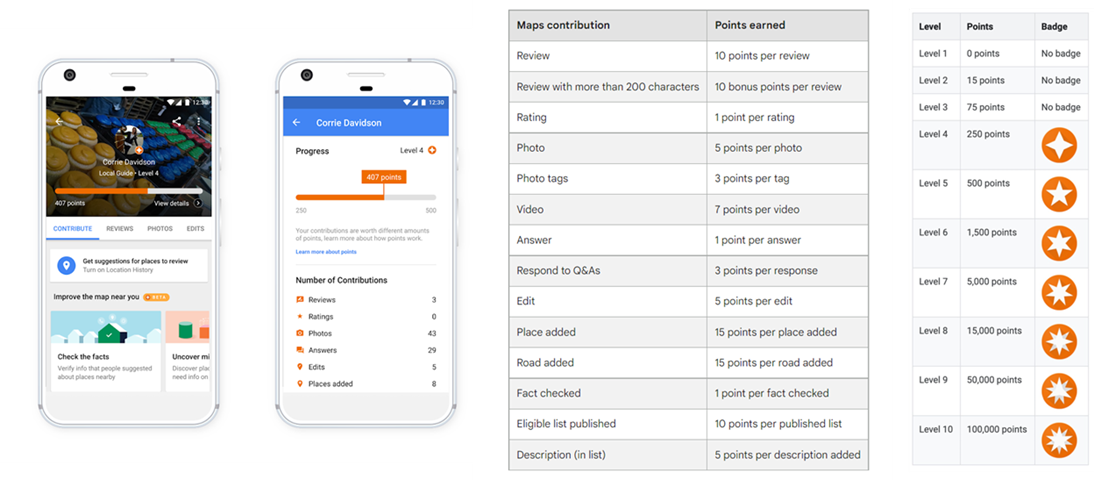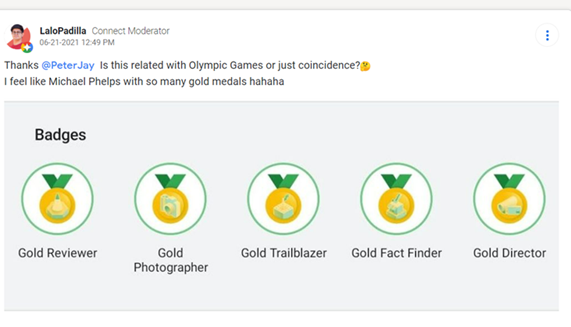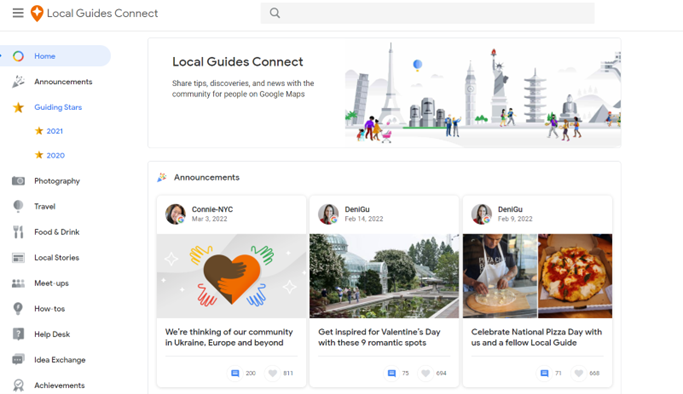Loyalty Program Examples: Ikon and Epic pass draw new lines in Subscription Loyalty arena
Subscription is a new frontier in loyalty programs that’s been carved out so famously by Amazon Prime. However,...
Google Local Guides may not come to mind as a Gamification Loyalty Program, in fact most consumers aren’t even aware of it. Take a closer look though, and you’ll see that it’s the GOAT of gamification in loyalty programs! How many other programs can tout so many members who have had such a transformative effect on their business? Google Local guides is tough to beat, with over 150 million Local Guides globally, who:
If the role of a loyalty program is to incentivize action while building passionate engagement with the brand, I can’t think of a better example.
The question is why do consumers invest so much of their valuable time supporting Google, with little apparent reward? Therein lies the trick of Gamification -- where the art of loyalty design meets the science of psychology.
![]()
Gamification taps into our fundamental needs for competition, status, achievement, and mastery, fueled today more than ever by the vast reach and visibility of social platforms. Underlying all of it is the Endowment Effect[i], which posits that Consumers place a greater value on things once they have established ownership. For Google, Local Guides establishes ownership of the brand and their content as participants complete various challenges and tasks like writing a review, tagging a photo or checking a fact. As Local Guides receive the associated recognition and visibility as an expert across the Google platforms, it spurs them on to the next level. And all along the way, Google benefits from the generation of the vast amounts of content needed for Search and Google Maps.
How does Local Guides work? And what are the lessons learned that can be applied to Loyalty Program Gamification for other brands?
First, it’s important to acknowledge that there are many flavors of gamification. In some cases it’s more about surprises and chance. In others (like Local Guides) it’s more about achievement and persistence.
One dimensional contests aren’t very much fun. Google has done an amazing job of identifying lots of different yet relevant dimensions. There are numerous rungs to climb with seven types of badges, each with 3 or more levels -- not to mention 10 different recognition tiers based on overall points and achievements. The program also does a brilliant job of playing to the unique strengths of different kinds of members. As a result, photographers, explorers, connoisseurs’, fact finders and creators can each play a key role in the Local Guides ecosystem.
For each, very specific actions are identified to achieve the next level, corresponding closely to Google’s content goals. Adding a photo gets 5 points and adding a tag to the photo earns another 3 points. Writing a review earns 10 points, and reviews with 200 or more characters earn an additional 10 points. Google has structured the incentives exactly around the kind of quality content their users demand, and the Local Guides get that because they are super users themselves.
The highly defined contribution point scheme and 10 recognition tiers creates aspiration for Local Guides

Contrary to the popular theory, Local Guides do not get paid. In fact, they barely get rewarded -- the actual perks are limited to those periodically available from google like storage upgrades, early access to new products or deals from partners. So why do they do it?!
The answer is Psychic Rewards or Psychic Income, defined by Merriam-Webster as rewards (as in prestige, leisure, or pleasant surroundings) not measurable in terms of money or goods but serving as an incentive. For Local Guides, the Psychic Reward is the sense of achievement, and the status that comes along with those badges.
For example, take LaloPadilla, who brags of being “…like Michael Phelps with so many gold medals hahaha…” Also note that Lalo is a Connect Moderator, a role that they’ve earned within the community.
One Google Local guide showcases numerous gold badges

Another important Psychic Reward is the visibility and level of authority within Google. Having a top review that is marked as helpful and shared to other users provides a strong pull.
Each brand has unique passion points to tap into, and the role that gamification can play will also vary. For example, a cosmetics company offers tips and products to enhance beauty, whereas a theme park creates family memories, or an airline maximizes comfort for business travel.
Local Guides Connect is a community where the Local Guides can showcase their status, share ideas, recognize each other’s achievements and much more. Status and achievements for each member are visible, and this is the place where Google recognizes the best of the best as Guiding Stars each year. Guides can share their accomplishments (one photographer had reached 37 million views!), best practices, and even vote for platform enhancements on the Idea Exchange. Self-organized meetups provide an option for members to get together (generating even more content for Google).
Google Local Guides is supported by a rich user community

As Google Local Guides demonstrates, starting with a clear business goal, featuring a relevant Psychic Reward and offering lots of ways to play will lead to good things. Here are three of the most important steps to designing a great Gamification Loyalty Program:
Absolute clarity on this point is essential to avoid spinning off track into fun but meaningless gamification. Figure 1 provides several different thought-starters.
For many, gamification is used as a means to fully acquaint and engage consumers with the brand, supplementing points earning options as an additional way to connect with the consumer. More specifically, it can be used to drive engagement with new products, or drive other non-purchase behaviors. Whatever it is, identify and keep a sharp focus on the business goal.
Figure 1: Business Goal Thought Starters
|
|
Selecting the right Psychic Reward involves finding the best match between the business goal, your target audience and your brand attributes. Figure 2 provides some thought starters for different types of Psychic Rewards. For example, Achievement might be the right reward for a financial institution whereas excitement/adrenaline rush might be the right trigger for a theme park. Working through the concepts and evaluating each one is a part of the creative process.
Figure 2: Psychic Rewards Thought Starters
|
|
The Gamification scheme should feature clear and easy to follow game play actions with point values assigned. As Local Guides demonstrates, Gamification doesn’t have to involve a slick gaming style interface, in fact that can often get in the way of the desired engagement. When considering the game play actions, you’ll maximize participation by playing into a variety of natural skills. With Local Guides, there are a number of different player skills/interests to get there (photography, mapping, reviews). What different avenues does your brand experience support?
Gamification can be a great way to breath fresh life into a mature loyalty program, and if done well will advance key metrics that will elevate overall program performance. Please contact LoyaltyLevers to find our more or schedule a complimentary consultation to discuss your unique situation.
Subscription is a new frontier in loyalty programs that’s been carved out so famously by Amazon Prime. However,...
One Key, Expedia Groups’ new loyalty program, is designed to knit together their three main...
Comments